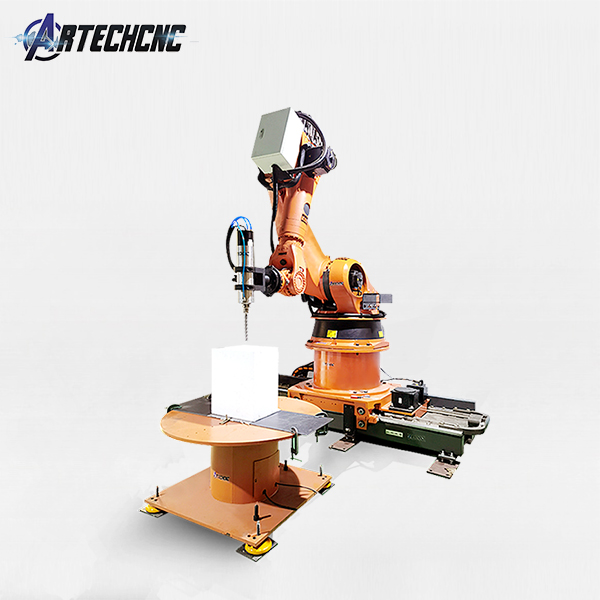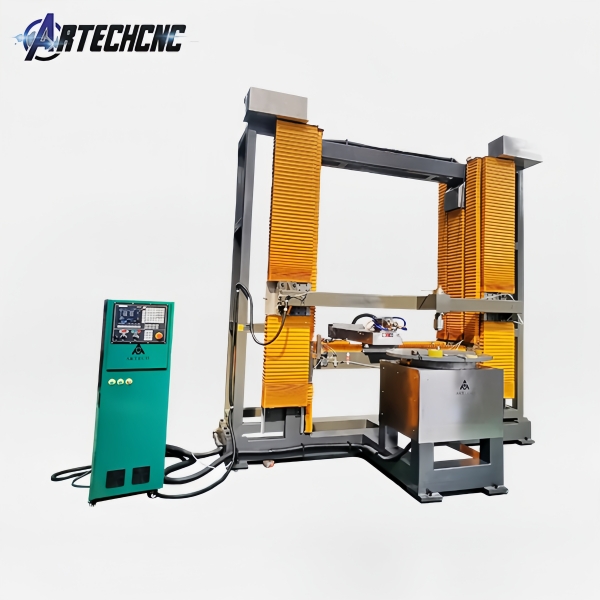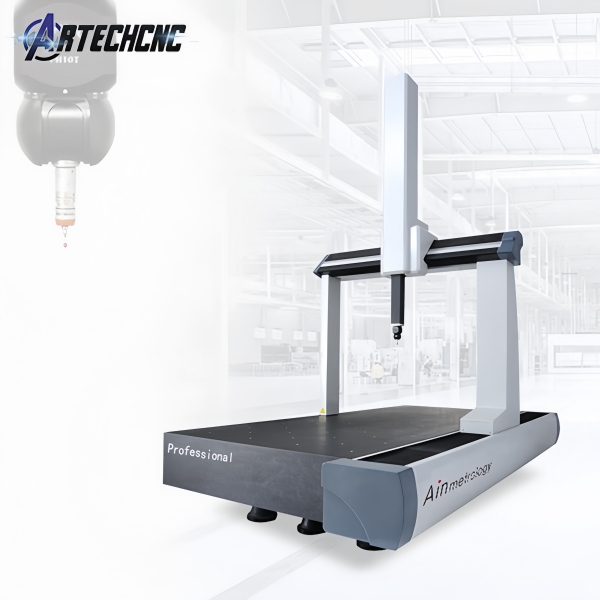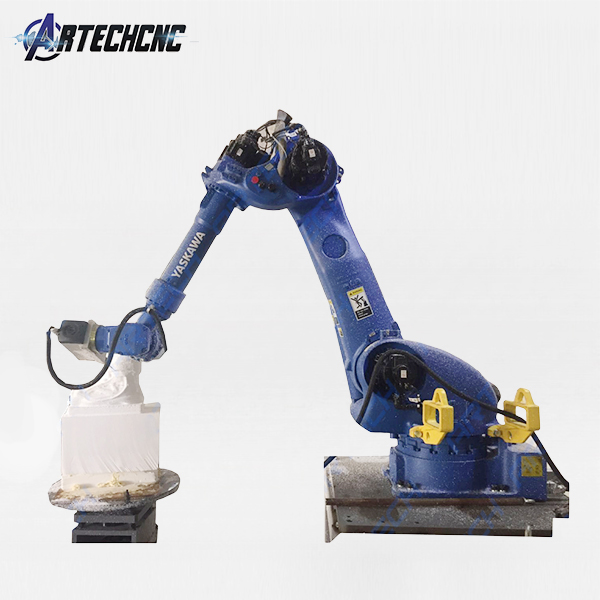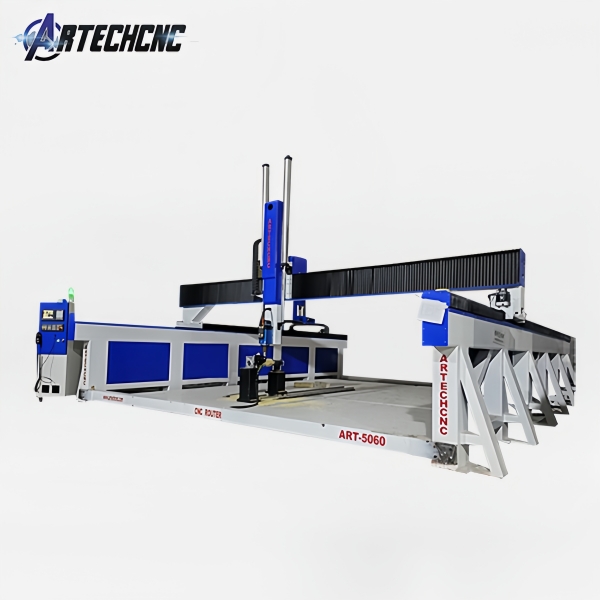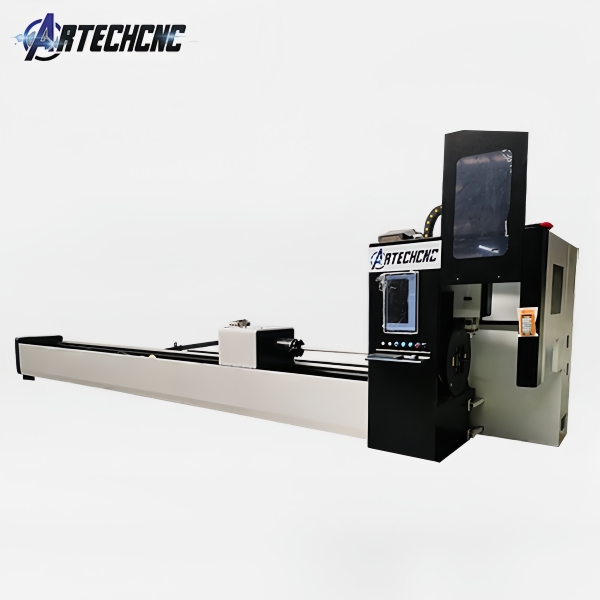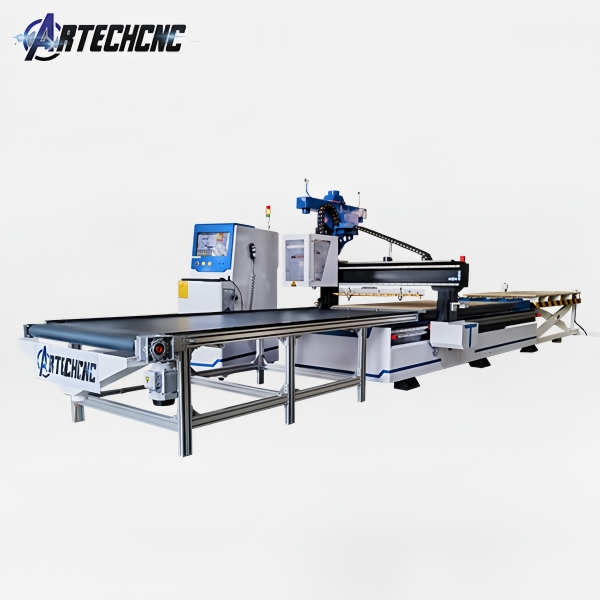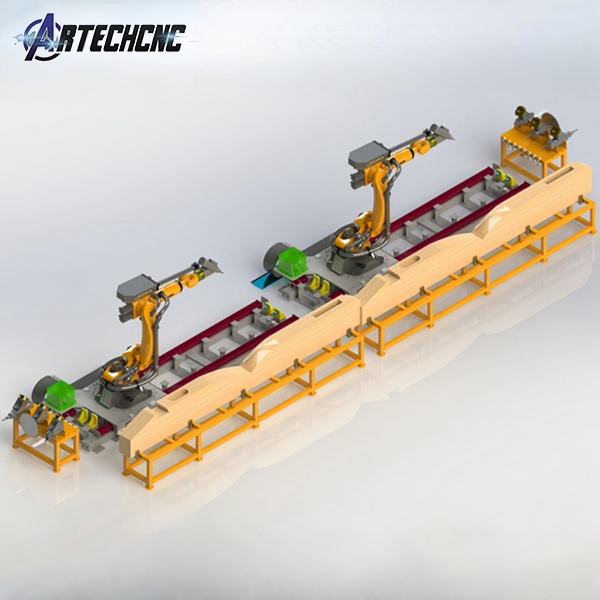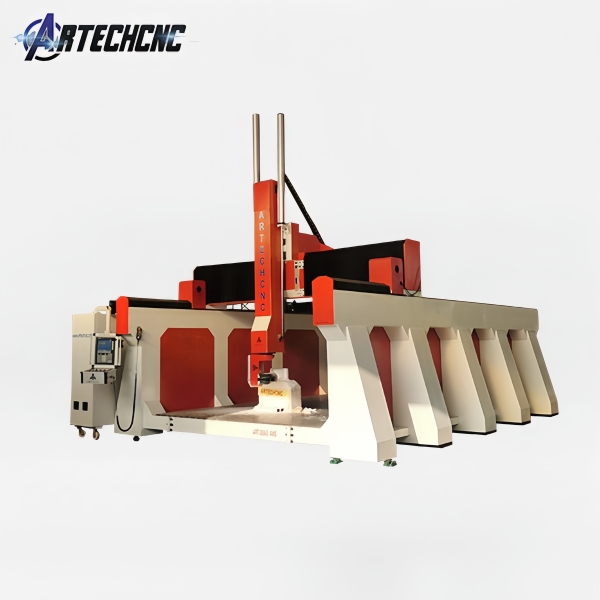Carving Technology Showdown: Milling Robot Arm vs. 5-Axis CNC Router
In the realm of precision carving, two key equipments—Milling Robot Arms and 5-Axis CNC Routers—stand out as dominant solutions, each armed with unique technological strengths. While both aim to transform raw materials into intricate designs, their mechanical structures, motion control systems, and performance characteristics create distinct advantages in different carving scenarios. This article delves into the core differences of their carving technologies, providing insights for manufacturers and designers in equipment selection.
1. Motion Mechanism & Carving Flexibility
The fundamental difference in carving performance stems from their motion design. A Milling Robot Arm typically features 6 to 7 axes of motion, mimicking the dexterity of a human arm. Its articulated structure allows for multi-angle, non-linear movement—it can reach around workpieces, adjust carving postures dynamically, and even process complex undercuts or internal contours that are inaccessible to fixed machines. For example, when carving 3D reliefs on large curved surfaces (such as automotive body panels or architectural stone columns), the robot arm can adapt its position in real time, ensuring consistent cutting depth across irregular substrates without repositioning the workpiece.
In contrast, the 5-Axis CNC Router adopts a gantry-style fixed structure with 3 linear axes (X/Y/Z) and 2 rotary axes (A/C). Its motion is characterized by highly stable, programmed linear interpolation, which excels in precise positioning along predefined paths. While it can handle complex spatial curves, its flexibility is limited by the fixed workbench—processing undercuts or extremely irregular shapes often requires multiple clamping setups. However, this fixed structure ensures minimal vibration during high-speed carving, a critical advantage for fine detail work.
2. Carving Precision & Surface Finish
Precision is the cornerstone of carving technology, and the two equipments show significant gaps in this aspect. The 5-Axis CNC Router is renowned for its ultra-high positional accuracy: its repeat positioning error is typically within ±0.02mm, and the spindle’s rigid connection to the gantry minimizes deflection during cutting. This allows it to carve micro-details such as 0.1mm-wide grooves, delicate textures, or sharp edges with exceptional consistency. In applications like jewelry mold carving or dental crown machining, the CNC router’s surface finish can reach Ra 0.4μm, eliminating the need for post-polishing.
The Milling Robot Arm, while more flexible, struggles with precision due to its articulated structure. Its repeat positioning accuracy ranges from ±0.05mm to ±0.1mm, and the longer the arm’s reach, the greater the cumulative error. Vibration during high-speed carving can also affect surface smoothness, resulting in a slightly rougher finish (Ra 1.6μm to 3.2μm) for fine details. However, for large-scale decorative carving (e.g., 1m+ stone reliefs or wooden murals), the robot arm’s precision is sufficient, and its ability to adjust cutting angles compensates for minor errors in surface uniformity.
3. Material Adaptability & Carving Techniques
Different materials demand distinct carving strategies, and the two equipments excel in different material ranges. The 5-Axis CNC Router is optimized for hard, dense materials such as metal (aluminum, brass), composite materials, and high-density wood. Its high spindle speed (up to 24,000rpm) and rigid cutting allow for efficient chip removal, while the fixed workbench prevents material deformation. For example, when carving titanium alloy aerospace components or carbon fiber decorative panels, the CNC router maintains stability even under high cutting forces, avoiding material cracking or tool breakage.
The Milling Robot Arm is more versatile for soft to medium-hard materials like foam, plastic, low-density wood, and acrylic. Its flexible motion enables gentle, adaptive cutting—ideal for materials prone to deformation. Additionally, the robot arm can integrate multiple tools (e.g., carving bits, sanding wheels, and polishing pads) in one workflow, realizing "carving + finishing" in a single process. This is particularly useful for custom furniture carving, where a wooden panel may require both relief carving and edge sanding. However, when processing hard metals, the robot arm’s low rigidity can lead to tool wear and uneven cutting, limiting its application in high-strength material carving.
4. Efficiency & Scalability for Carving Production
Efficiency varies significantly based on production volume and design complexity. For mass production of standardized carved parts (e.g., batch-produced decorative moldings or electronic device casings), the 5-Axis CNC Router is far more efficient. Its ability to execute pre-programmed paths at high speed, combined with automatic tool change systems, allows for 24/7 continuous operation. A single CNC router can process 50-100 identical workpieces per day, with consistent quality across all units.
For small-batch, customized carving (e.g., one-of-a-kind artworks or prototype models), the Milling Robot Arm takes the lead. Its quick programming (supported by CAD/CAM software and AI visual guidance) reduces setup time by 30%-50% compared to the CNC router. Additionally, the robot arm can switch between different carving tasks without reconfiguring the workspace—for example, it can carve a wooden sculpture in the morning and an acrylic sign in the afternoon. This flexibility makes it a favorite in creative industries, where design iterations are frequent and production runs are short.
5. Cost-Benefit Analysis for Carving Applications
Cost is a key factor in equipment selection. The 5-Axis CNC Router has a higher upfront investment (typically \(50,000-\)200,000) and higher maintenance costs (due to its complex spindle and linear guide systems). However, its low scrap rate (less than 0.5%) and high production efficiency make it cost-effective for large-scale carving projects.
The Milling Robot Arm offers a lower entry barrier (prices range from \(20,000-\)80,000), and its multi-functional design (it can also perform welding, assembly, and inspection) increases overall equipment utilization. While its scrap rate (2%-3%) is higher than the CNC router’s, this is offset by lower tooling costs and faster setup times for small batches. For small and medium-sized enterprises (SMEs) or creative studios focused on custom carving, the robot arm provides better return on investment.
Conclusion: Choosing the Right Tool for the Carving Task
The Milling Robot Arm and 5-Axis CNC Router represent two distinct paradigms in carving technology: flexibility versus precision, versatility versus efficiency. The 5-Axis CNC Router is the undisputed choice for high-precision, mass-produced carving projects—especially those involving hard materials and micro-details. The Milling Robot Arm, on the other hand, shines in custom, small-batch carving, where adaptability, quick setup, and multi-material processing are prioritized.
As technology advances, the gap between the two is narrowing: high-end Milling Robot Arms now incorporate AI-driven vibration compensation to improve precision, while some 5-Axis CNC Routers add robotic loading/unloading systems to enhance flexibility. Ultimately, the optimal choice depends on the specific requirements of the carving project—whether it’s the pursuit of micron-level accuracy, the need for creative flexibility, or the balance between cost and production scale. By understanding their technological differences, manufacturers and designers can unlock the full potential of carving technology to bring their creative visions to life.


